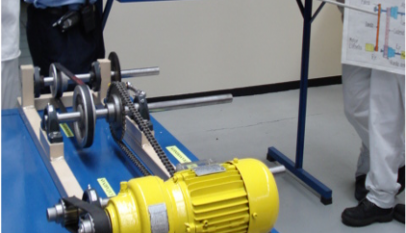Equipment maintenance can be defined as preventing machines from breaking down by selecting what type of maintenance should be used, which parts of which machines, formulating maintenance standards, and then systematically maintaining and controlling the machines following a maintenance calendar.
This definition can be split into the following five component elements, which form the structure of equipment maintenance:
- Which machines
- Which parts
- What type of maintenance
- Formulating maintenance standards
- Systematically maintaining and controlling the machines
Each of these elements will now be explained
(1) Which machines
The equipment should be scored in terms of its importance from the standpoints of productivity, quality, cost, delivery, safety, and morale, and ranked as AA, A, B, or C depending on its score to prioritize the maintenance effort.
(2) Which parts
In practice, the decision as to which parts of the equipment to maintain will become progressively clearer during the Autonomous Maintenance and Effective Maintenance process. The maintenance of existing equipment depends very greatly on experience.
(3) What type of maintenance
This is also decided based on experience in most cases.
(4) Formulating maintenance standards
Once the decision has been reached as to which parts of which machines to maintain, and what types of maintenance to use, the details are written into standards (equipment maintenance activity standards) in 5W1H format.
(5) Systematically maintaining and controlling the machines
Effective maintenance is all about maintaining the equipment systematically. To accomplish this, the maintenance tasks are recorded on a maintenance calendar which is then rigorously implemented.

Note: In this case, ‘maintenance’ refers to equipment maintenance in general; the decision as to who will perform it (the maintenance department, as part of Effective Maintenance, or the operating department, as part of Autonomous Maintenance) is a separate issue.
















